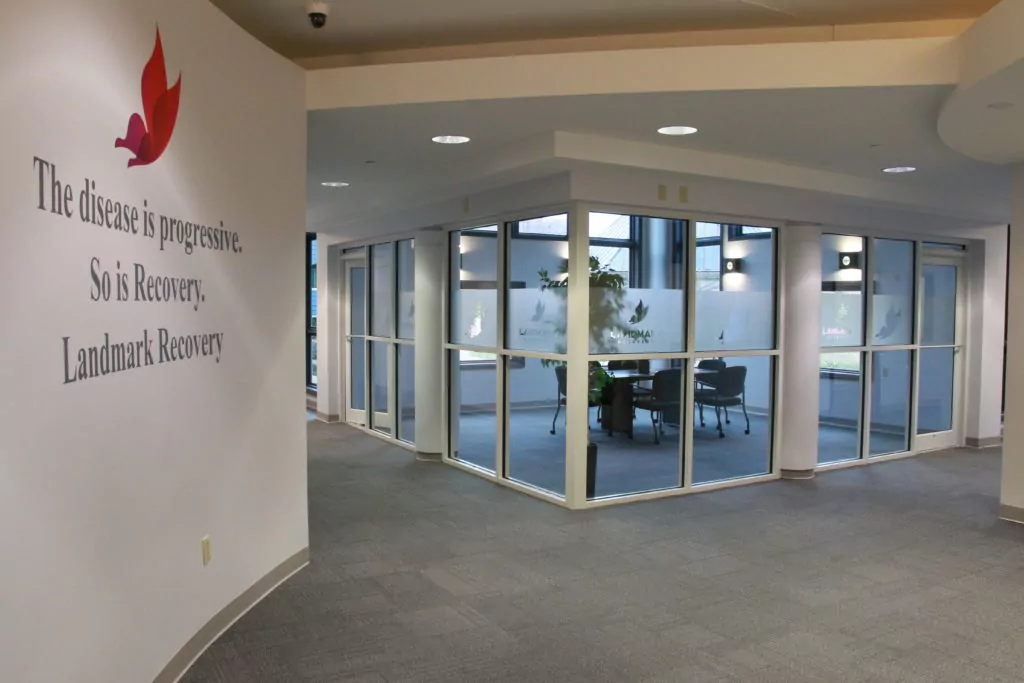Landmark Recovery is on the fast track to expansion.
Despite looming staffing shortages in the behavioral health nursing space, the substance use disorder (SUD) provider is bullish about organic growth. It’s looking to exponentially expand both its geographical footprint and treatment area in the next few years.
But, unlike other operators, Landmark CEO and co-founder Matthew Boyle said the provider doesn’t plan to use M&A or telehealth as an expansion tool.
The company started this year with eight facilities and is planning to have 16 facilities by the end of the year. Its expansion plans for next year are even more ambitious. Boyle said the company will have 40 facilities by the end of 2023.
“We’re opening one a month right now,” Boyle said. “We expect to increase that pace from one-a-month to two-a-month sometime in the first quarter of next year. And we see several years of being able to grow at that pace before we kind of run into what we believe is the natural balance of supply and demand.”
In the future, the company is looking to expand beyond just SUD treatment as well.
“We’re also very actively expanding into other sectors of behavioral health. We are definitely in the evaluation phase right now,” Boyle said. “Our plan is, five years from now, we don’t want to be single-threaded through substance use disorder.”
Next year, the company is launching an office-based opioid treatment program. The company has already run a successful pilot program and is planning on launching roughly 25 of these treatment programs, predominantly in the states of Indiana and Kentucky.
Founded in 2016, Landmark Recovery offers a number of SUD programs. The organization offers medical detox, inpatient and outpatient rehab, partial hospitalization, medication assisted treatment and therapy programs.
While expansion is a major strategic focus for the Franklin, Tennessee-based operator, Boyle said he has no current plans to do so through M&A.
“I hate M&A. I did one M&A deal in Las Vegas, and it was only six patients, and I basically got it for real estate value. And it was a nightmare. It took us a full year to stabilize that property,” Boyle said. “Whereas normally we stabilize it in 90 to 120 days, just because people had so many bad habits and it was so, so hard to change the culture.”
Boyle said he doesn’t like using the word “never,” but that it would take a lot for the company to go back down that M&A track.
Expansion in the face of workforce woes
The clinician shortage continues to plague the behavioral health sector, though Boyle said Landmark’s only major workforce issue is nurses. He noted that the nurse shortage is “dire” for everyone in health care right now.
About 130 million Americans live in regions with a designated mental health clinician shortage, according to the Kaiser Family Foundation.
He attributes the workforce shortages, in part, to the number of nursing colleges in the U.S.
“The number of nursing colleges that we have in America is not that different from what it was in the 80s,” he said. “And our demand for nurses has [roughly] doubled since then. So even before COVID, even before the crazy inflation that we’ve had, demand for nurses was already exceeding supply.”
At Landmark, Boyle has created initiatives to help combat staffing issues. Earlier this year, for instance, Landmark rolled out the “Escalator Program,” which gives employees insight about their earning potential during a set timeframe. It also incentivises staff to stay by providing financial resources.
Yet, Boyle said that the company has had mixed results with this program.
“What I could not have anticipated is the 1970s coming back with crazy inflation,” Boyle said. “So we’ve already found that some of the escalators that we rolled out in December are antiquated because the market, especially in nursing, has been increasing 20%, 25%, 30% a year in terms of the starting wages. So we’ve had to suspend escalators for certain roles in certain cities, but not everywhere, and we’ve definitely seen a decrease in our turnover.”
Technology is another way that Landmark is looking to help with higher staff utilization. The company has implemented a new intake system via telemedicine. This system lets nurses and staff process paperwork remotely.
“If you can increase your utilization of a nurse from 70% to 80%, that’s going to save you millions of dollars in the long run at scale,” Boyle said. “So driving up utilization was huge.”
The new intake system also helps improve consistency across the organization. Historically, it was difficult to train nurses from different states to follow one set way of documenting.
“The documentation was lacking, which impacts our ability to get insurance authorization,” Boyle said. “So the consistency of patient experience was kind of the second driving factor for why we’ve done this, but it’s been very successful so far, and we’re very excited. I’m not aware of any other health system that processes intake centrally like that.”
While this digital-backed intake system has been an overall success for the company, Boyle said he has no interest in becoming a telehealth company.
“We’re not interested in playing the telemedicine angle right now,” he said. “We don’t have a competitive advantage. I think there are plenty of people out there that do it well. Never say never, but it’s not on my strategic radar.”
As for the future, we could be seeing more value-based care emerge from Landmark. Boyle notes that the organization has the data to prove outcomes.
“I would love to; it’s incredibly hard to get the attention of the insurance providers for whatever reason. It’s on our list of strategic objectives,” Boyle said. “Because listen, I stand behind my outcomes 100%. I have the data to show what our readmission rate is, and we have a lot of stuff in place to control readmissions, even without having a financial stake in it just because it’s the right thing to do.”



